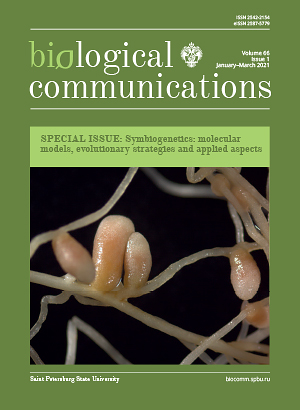Variability of the Russian populations of Puccinia triticina under the influence of the host plant
DOI:
https://doi.org/10.21638/spbu03.2021.104Abstract
The article analyzes our own data and data from the literature on the study of plant–pathogen interactions in the pathosystem of Puccinia triticina and host plants of the genera Triticum and Aegilops with different ploidy and genomes. We characterize the long-term variability of the Russian populations of the pathogen, caused by the cultivation of genetically protected cultivars of common wheat (T. aestivum). Differences of the pathogen’s virulence on hexaploid species T. aestivum and tetraploid wheat (T. durum) are shown. Data on the pathogen’s virulence on other hexaploid, tetraploid, and diploid relative species Triticum sp. and Aegilops sp. are presented. Adaptation and specificity to the host plant were shown as the key driving factors in the evolution and divergence of clonally propagating phytopathogens, which include leaf rust.
Keywords:
leaf rust, wheat, Triticum sp., Aegilops sp., Lr-genes, resistance, plant-host interaction, pathogen
Downloads
References
Downloads
Published
How to Cite
License
Articles of Biological Communications are open access distributed under the terms of the License Agreement with Saint Petersburg State University, which permits to the authors unrestricted distribution and self-archiving free of charge.





